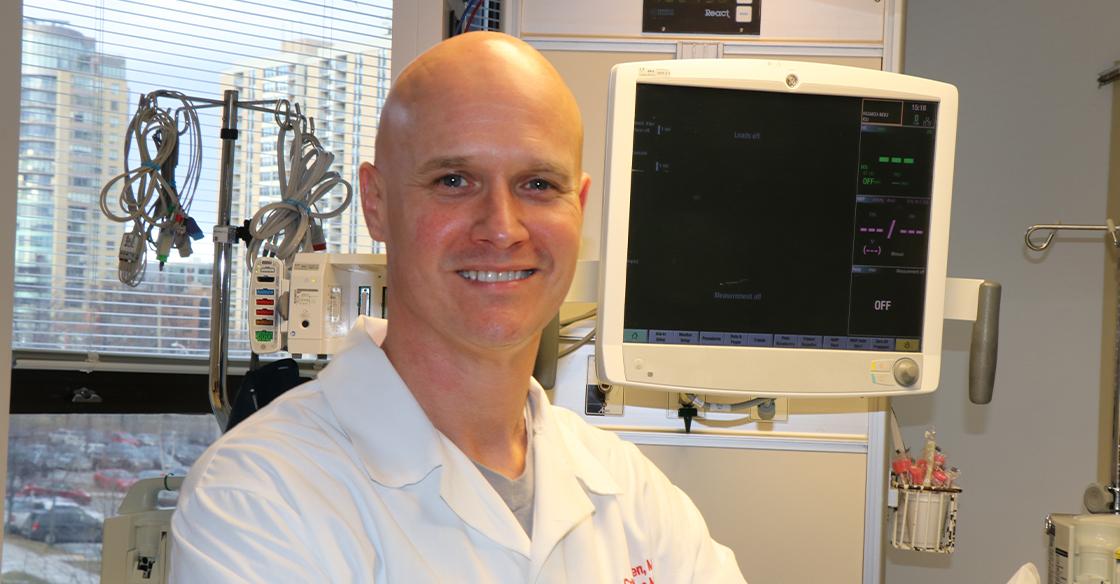
Originally published on thechronicleherald.ca.
Trauma often strikes when it’s least expected. Motor-vehicle collisions, near-drownings, workplace accidents, and other unfortunate events can result in serious, life-threatening injuries.
When such things happen, Nova Scotians can be confident they will receive expert, world-class care. At a time when many have expressed valid concerns about our health-care system and areas that require improvement, it is important to know we can be proud of what we do well.
Trauma Nova Scotia, a provincial program of Nova Scotia Health Authority and based at the QEII Health Sciences Centre, is committed to providing leadership for our province’s trauma-care professionals, and to the continuous development and improvement of our trauma system.
Our goal is to ensure that all trauma patients receive optimal care, no matter where an injury occurs. The trauma system in Nova Scotia stretches from Yarmouth to Sydney to Amherst, and provides care to some trauma patients who are severely injured in P.E.I. and New Brunswick.
Through a highly co-ordinated system involving our partners at Emergency Health Services (EHS) and physicians across the province, we are able to quickly identify and direct patients to the help they need. This ranges from minor injuries that can be managed at local facilities to major traumas requiring resuscitation and treatment at one of our two Level 1 trauma centres in Halifax – the QEII (adults) and the IWK Health Centre (children).
Our objective is for patients who’ve experienced a trauma to return to their families and their way of life as soon as possible.
While resuscitation accounts for only a brief period of time in the overall care of a trauma patient, it’s the first crucial step to a successful recovery. Often initiated by paramedics, physicians and nurses across the province, activation of our trauma system allows for the most critically injured patients to be transported by EHS, including LifeFlight, for further assessment and resuscitation by dedicated trauma teams at the QEII and the IWK.
The adult trauma team assembles in the QEII’s Charles V. Keating Emergency & Trauma Centre, where one of our 15 adult trauma team leaders is available 24-7, alongside various health-care professionals including nurses, paramedics, respiratory therapists, and residents from different specialties.
Following resuscitation, patients often require immediate surgery and are then admitted to the intensive care unit or another surgical service where their road to rehabilitation and recovery begins.
Despite the severity of a patient’s condition, we know that if a patient can survive the initial 24 hours after the event, they will likely survive their injuries and be eventually discharged from hospital.
A key component to advancing trauma system performance is the collection of detailed information on every trauma. Trauma Nova Scotia maintains a registry that captures data on all major traumas across the province – approximately 1,000 per year. This information is analyzed to identify areas for development and improvement, influence policy and procedures, inform education for health-care providers, and perform research and ongoing quality improvement.
External investigators may also request data from the registry for research purposes. At the QEII and Trauma Nova Scotia, we are actively engaged in research focused on resuscitation, organ donation, professional education, and other trauma-related areas. Our residents have won national competitions based on data collected by our registry, and our innovative work on the mobilization of critically-ill trauma patients has been recognized as practice-leading.
Education is another critical component of trauma system performance. We provide educational opportunities for physicians, nurses and allied health professionals so the same expert care can be expected, no matter where or when a trauma occurs.
Our staff travel to communities across Nova Scotia, and in partnership with the EHS mobile simulation truck, focus on a team approach to the initial evaluation and resuscitation of trauma patients at rural facilities. We also provide the Advanced Trauma Life Support course which instructs physicians on how to assess a patient’s condition, resuscitate and stabilize him or her, and arrange for inter-facility transfers within our trauma system.
These programs create a provincewide communication network within NSHA that works to advance our trauma system and address best practices in trauma care.
Our province’s trauma and critical care system spans the time medical first responders and EHS arrive on scene to the day when many trauma patients are able to return home to their families.
It is a privilege and a pleasure to have a role in leading trauma care in our province. When I hear from patients about their experiences, I am confident that our work at Trauma Nova Scotia, the QEII, IWK, and NSHA sites across Nova Scotia is providing world-class care that we can be proud of.
Dr. Rob Green is senior medical director, Trauma Nova Scotia (Nova Scotia Health Authority), and a critical care and trauma physician at the QEII Health Sciences Centre.